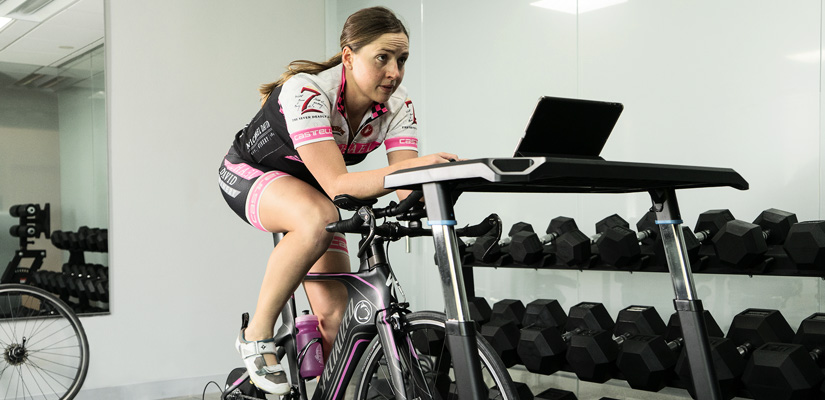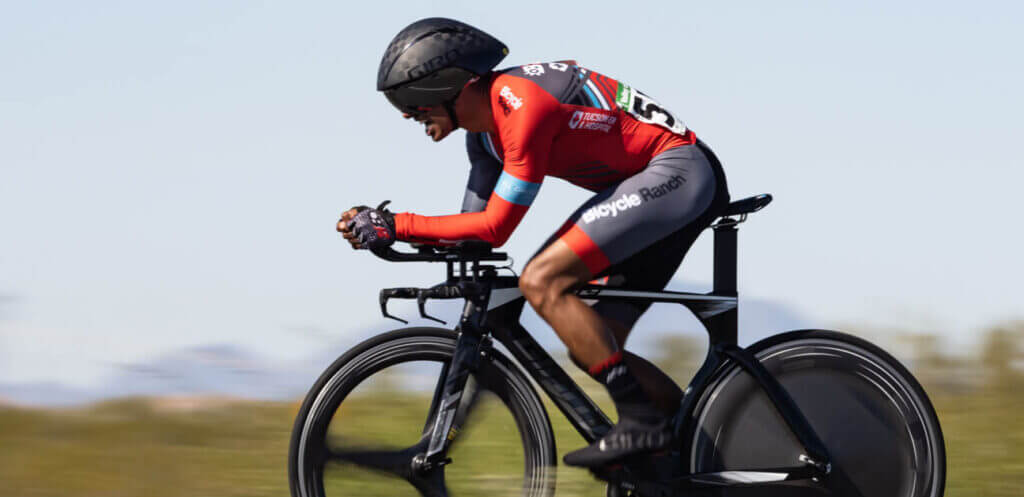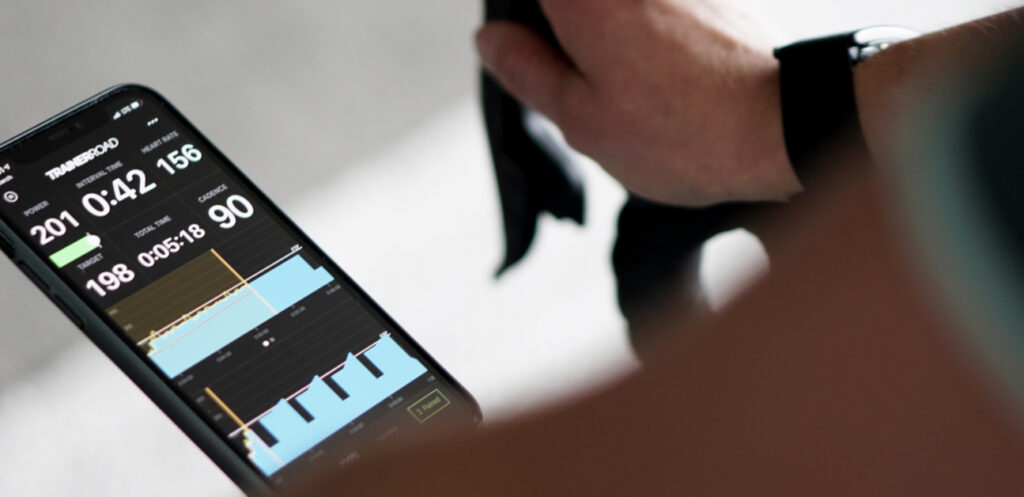How Do I Achieve the Proper Balance of Power, Aerodynamics, and Sustainability?

Answer: It’s a process, and every rider will come to a different balance that suits them. Every step in the process can yield more power, greater aerodynamics, and/or higher levels of sustainability.
Who Knew There Was So Much to Time Trialing!?
Going fast in a time trial is a marriage, if a polygamous one, of four things: fitness, aerodynamics, bike fit & toughness. Most riders have 2 or 3 of these under control, but to truly excel in a race against the clock, a firm handle on all 4 is requisite.
We’ve already covered the basics of aerodynamics and gone into many of the details of time trial conditioning, so let’s shift the discussion to the rider-bike interface. Then next time we’ll talk about the mental skills behind being legitimately fast.
Aerodynamics at the Expense of Power
No rider intentionally plans to sabotage performance when adopting an aggressive aerodynamic position, but that’s often what happens. Sadly, of the basic bike fit considerations – power, aerodynamics, and sustainability – too many riders are resigned to settling for two of the three.
But there is always a balance to be struck between a position’s aerodynamics and its usability. Achieving this balance is the only way to fully express the power you’re actually capable of producing over your time trial’s full duration. This is a necessary commitment if you want to be the fastest TT’er you can be.
“I Can Sustain Anything for an Hour”
The pervasive view on time trials is that they hurt, and they do, they have to. But how they hurt should be confined to the mad watts you’re throwing down and not the unrealistic bodily contortions you’re forcing upon yourself.
Power sustainability is a clear and obvious goal. But position sustainability is the redhead stepchild of the time trial family, unfairly neglected. What’s worse, it’s sometimes used interchangeably with ‘comfort’.
In the context of attaining top performances against the clock, no time trialist achieves any real level of comfort when pushing their body up against its limits. So let’s chase position sustainability and leave comfort for whatever constitutes our post-ride recovery.
Achieving Position Sustainability
Sacrificing power in exchange for what seems to be a more aero position is a common error. It’s a sacrifice that sees riders start a TT at realistically high power outputs only to struggle as they fall, fall, fall because their overly aggressive position becomes increasingly untenable.
Achieve a higher level of position sustainability and you’ll fight your body and your bike less and less as the discomfort mounts more slowly. This allows you to keep your focus on what matters most – putting power to the pedals and tamping down the mounting muscular agony – and not growing increasingly distracted by the pains of ‘riding low’.
A proper bike fit is the place to start, and there are many reputable fit services to choose from depending on your budget and even your time allowance. Higher-tech fits can run multiple hundreds of dollars and involve several hours initially and even require return visits to make minor tweaks.
But spend the time homing in on this near-magical harmony between aerodynamics, power output on par with your actual capabilities, and of course, sustainability and you can nullify a major obstacle in the pursuit of your fastest times.
Tips from the Those Who Know
Just how important is nailing the way your bike fits you? Daniel Healey (Tinkoff/BMC) says that research from Spain shows that a variance of 0.5cm-1.5cm from optimal saddle position can result in significantly greater energy expenditure. A seemingly tiny change can literally equate to less effort for the same speed!
Simon Smart, the dude behind Enve wheels and the Scott Plasma TT bike, says that fast time trialing around 50kph/30mph will see about 85/15% split in terms of drag coming from the rider and drag coming from the bike. But for riders who have optimized their position on the bike, they can shift that closer to a 65/35 split! While few of us are capable of sustaining speeds that high, we’re all chasing that far more favorable drag split.
And we probably didn’t need anyone to tell us that narrowly spaced aero bars make it harder to breathe, but Charlton, et al. did it anyway. The point here is that each aerodynamic compromise in sustainability has to be weighed against the sacrifice in power output.
Conclusion
Finding the razor-edge balance between sustainability and aerodynamics, for your particular duration, often entails an arduous process that may never actually end. But, as mentioned above, every step in the process can yield more power, greater aerodynamics, and/or higher levels of sustainability. The trick is finding the fastest balance of all three.
Recommended Resources
How Do I Train for Faster Time Trials?
For more answers to your cycling training questions, listen to our podcast Ask a Cycling Coach — the only podcast dedicated to making you a faster cyclist. New episodes are released weekly. Yes, we know that’s addiction territory 😉
It’s official, I’m totally addicted to @TrainerRoad & Ask a Cycling Coach podcast.Already seeing results on the road https://t.co/sCXKJATO2q
— John Roberts (@j_roberts) June 21, 2016

